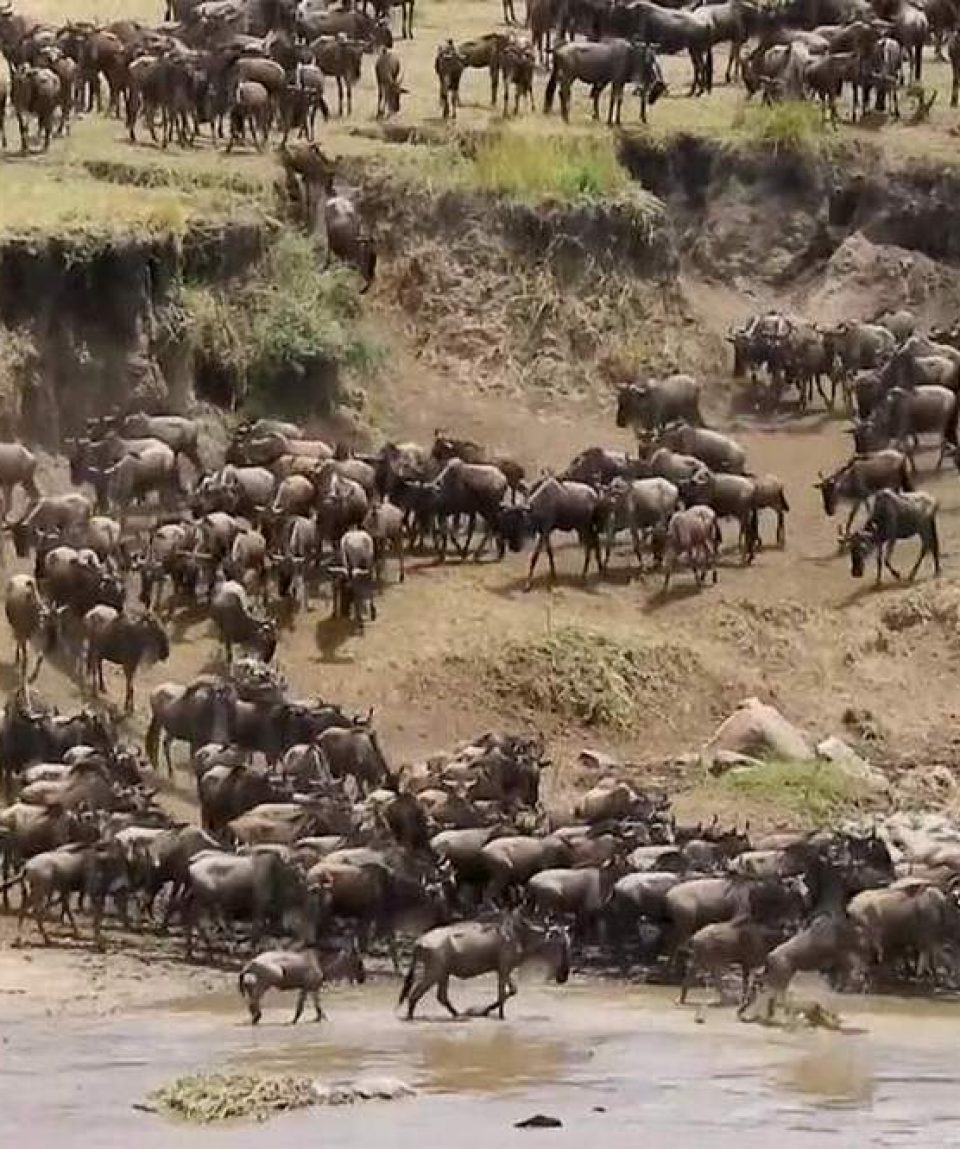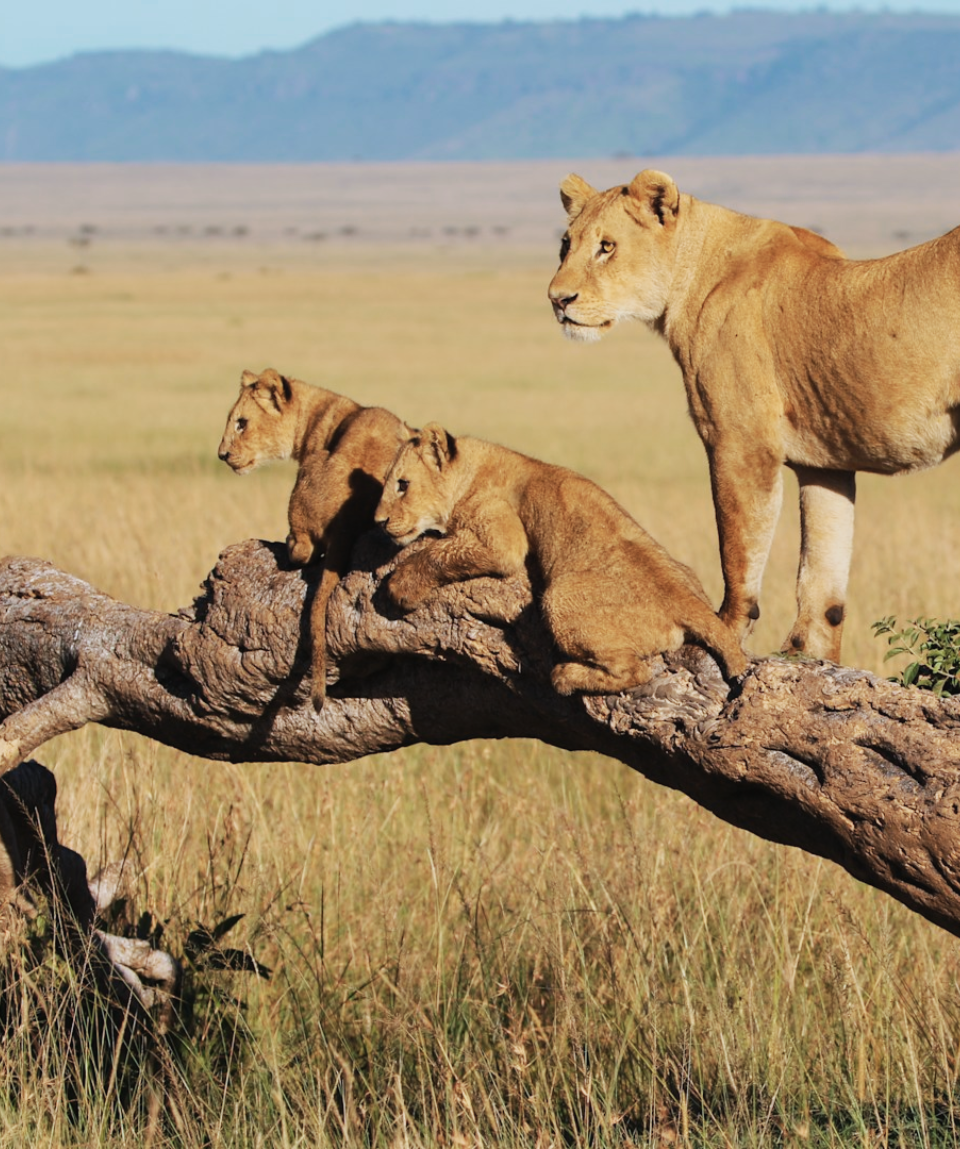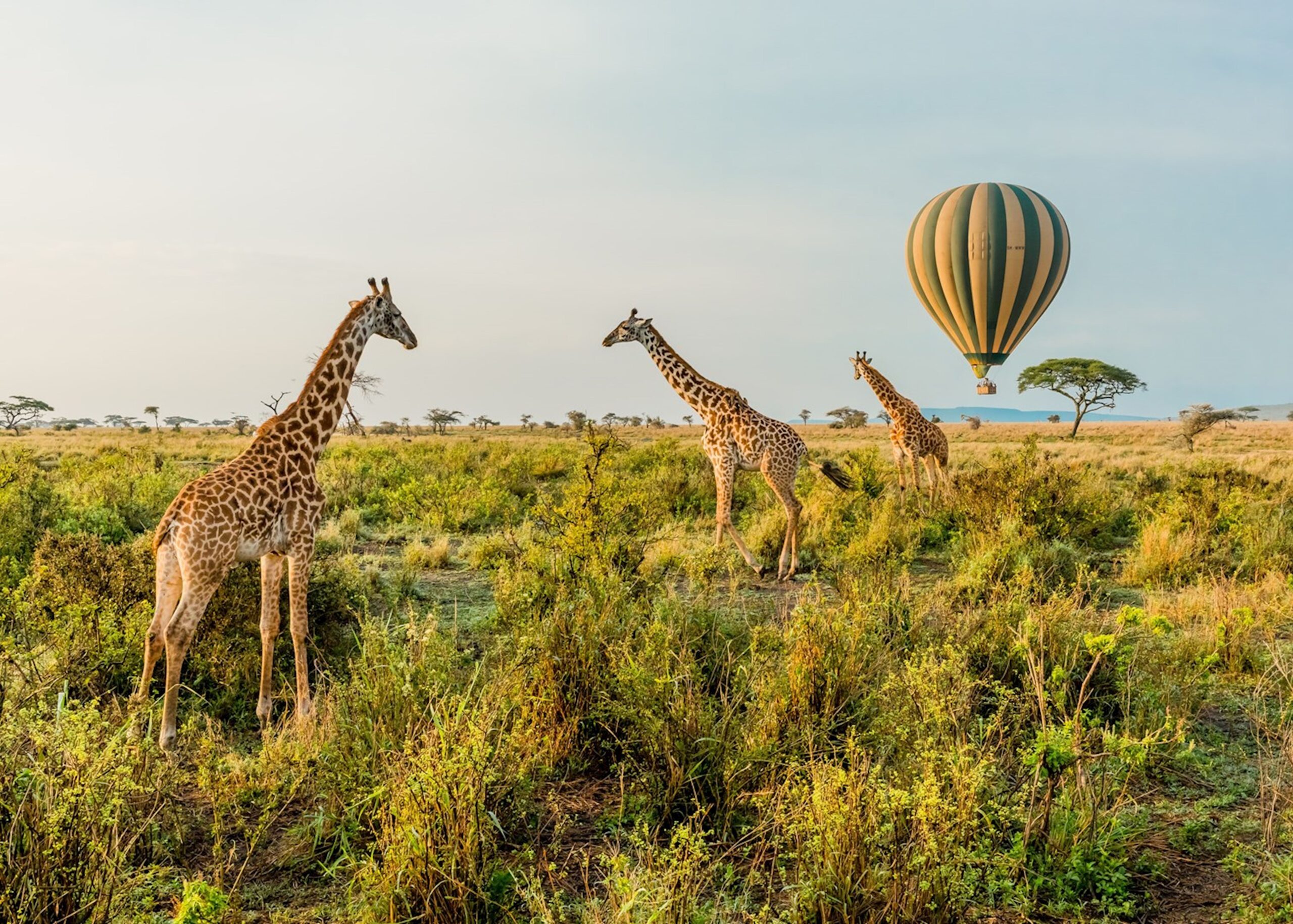

M

The Great Migration – Experience the largest land migration on Earth, as over two million wildebeest, zebras, and gazelles travel across the plains in search of fresh grazing.
The Big Five – Encounter lions, leopards, elephants, rhinos, and buffalo in their natural habitat.
Predator Action – Watch as cheetahs, hyenas, and wild dogs engage in thrilling hunts.
Scenic Landscapes – Explore rolling grasslands, rocky outcrops (kopjes), and acacia-dotted savannas.
Rich Birdlife – Spot over 500 species, from majestic eagles to colorful lilac-breasted rollers.
The Great Migration: Witness nearly two million wildebeests, zebras, and gazelles undertake their cyclical journey across the Serengeti in search of greener pastures. This natural phenomenon, accompanied by predators such as lions and crocodiles, is the highlight of Africa’s safari calendar.
Abundant Wildlife: The Serengeti is home to the famed "Big Five" (lion, leopard, elephant, buffalo, and rhino) as well as cheetahs, hyenas, giraffes, and an astonishing variety of antelopes. With more than 70 large mammal species and over 500 bird species, Serengeti is a haven for wildlife enthusiasts.
Iconic Landscapes: The Serengeti’s sweeping vistas of golden grasslands dotted with baobab and acacia trees are breathtaking. Explore areas like the Seronera Valley, a predator-rich region, and the unique granite kopjes, which serve as natural lookout points for lions and other animals.
Photographic Opportunities: From dramatic predator-prey interactions to serene sunrises over the savannah, the Serengeti offers some of the most photogenic landscapes and wildlife encounters in the world.
Conservation Success: As one of Africa’s oldest ecosystems, the Serengeti remains largely unchanged over the millennia, thanks to dedicated conservation efforts. A visit here supports the vital work of protecting its wildlife and habitats for future generations.

When to Visit: While the Serengeti is a year-round destination, your timing can shape your experience:
June to October (Dry Season): Ideal for game viewing as wildlife concentrates around water sources.
November to March (Green Season): Enjoy lush landscapes, calving season, and abundant birdlife.
The Great Migration peaks from June to July (Grumeti River crossings) and August to October (Mara River crossings).
The Serengeti offers an array of accommodations to match every preference and budget:
Luxury Lodges: Indulge in opulence at Serengeti Migration Camp or Four Seasons Safari Lodge, complete with infinity pools and panoramic views.
Tented Camps: For an authentic bush experience, mobile camps like Lemala or Olakira move with the migration, offering unparalleled proximity to wildlife action.
Mid-Range Options: Lodges such as Kubu Kubu Tented Lodge or Serengeti Serena Safari Lodge combine comfort with affordability.
Budget-Friendly Stays: Public and special campsites cater to adventurous travelers seeking an intimate connection with the wild.
Essentials include a good camera, binoculars, sunscreen, a hat, lightweight clothing, and sturdy walking shoes. Don’t forget insect repellent and a guidebook to identify wildlife and bird species.
Most visitors start their Serengeti journey in Arusha, accessible by road or flights from Kilimanjaro International Airport. From there, domestic flights or scenic drives lead to the park. Airstrips in Seronera and other regions offer convenient access.

The Serengeti offers more than just wildlife encounters. Enrich your journey by connecting with the region’s cultural and conservation efforts:
Maasai Cultural Visits: Spend time with the Maasai people, learning about their traditions, dances, and harmonious relationship with nature.
Conservation Tours: Visit the Serengeti Research Institute to gain insights into the ongoing efforts to protect this delicate ecosystem.
Hot Air Balloon Safaris: Witness the Serengeti's magic from above as the golden plains stretch endlessly beneath you.